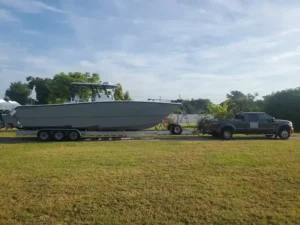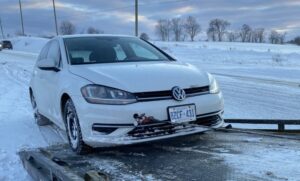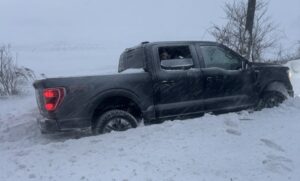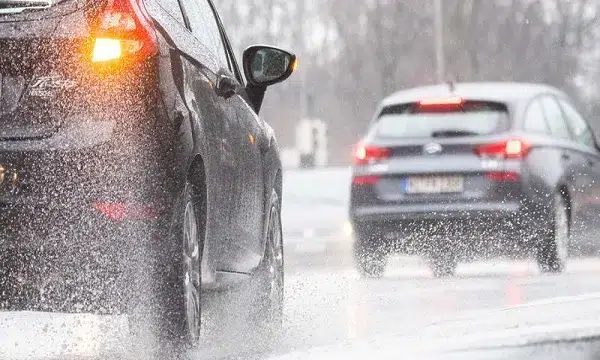Driving in Ontario, particularly in the Aurora area, is an experience defined by seasonal extremes. We transition quickly from the flash floods of spring and heavy summer downpours to the sudden, icy grip of a winter storm. As a local towing service, Pars Towing has seen firsthand the consequences of poor preparation and risky driving habits in adverse weather. Our mission is not just to get you home when you are stranded, but to help you avoid getting into a situation that requires a tow in the first place.
Driving in the rain and snow presents unique challenges that significantly reduce traction, visibility, and control. Mastering these conditions is essential for safety. This comprehensive guide will walk you through the preparation, techniques, and emergency steps necessary to stay safe on wet, slushy, and icy roads, ensuring you are equipped with the best safety tips for driving in the rain and snow.
I. Preparation is Paramount: The Pre-Drive Checklist
The safest driver is the one who never leaves the driveway without ensuring their vehicle is ready to handle the worst conditions. Proper vehicle maintenance is the foundation of driving safely in rain and snow.
- Learn More >>>>>Emergency Towing Services : When and How to Call for Help
The Tire Factor: Your Connection to the Road
Your tires are the single most critical safety feature in poor weather.
- Tread Depth: Tire tread is designed to channel water and slush away from the contact patch. If your tires are balding, they lose this ability, drastically increasing the risk of hydroplaning. For Canadian winter driving, a tread depth of at least 4/32 of an inch is recommended. Use a quarter and place it with the caribou’s nose facing down into the tread; if you can see the tip of the caribou’s nose, your tread is too shallow.
- Winter Tires: In the Aurora area, where temperatures consistently drop below 7 degrees Celsius, all-season tires harden and lose elasticity, drastically reducing grip. Dedicated winter tires are engineered with a softer rubber compound and specific tread patterns to maintain traction on ice and in snow. It is the single best investment you can make for winter driving safety.
- Tire Pressure: Cold weather causes tire pressure to drop. Low pressure reduces the tire’s contact patch, which is crucial for maximizing grip. Check your tire pressure regularly and inflate it to the manufacturer’s recommended PSI (found on a sticker inside the driver’s side door jamb).
Visibility and Lighting
If you cannot see the road, you cannot react to hazards. If other drivers cannot see you, they cannot avoid a collision.
- Wiper Blades and Fluid: Replace worn-out wiper blades before the season begins. Consider installing winter blades, which are heavier and less prone to icing up. Crucially, always keep your windshield washer reservoir full of a fluid rated for temperatures of at least −40∘C. Regular or summer fluid will freeze on your windshield, instantly blinding you.
- Clear All Glass and Lights: Before driving in snow, clear all snow and ice from every window, mirror, and all lights (headlights, tail lights, and turn signals). Do not forget your roof; snow left there can slide down and block your vision or fly off and hit the car behind you.
- Headlights and Tail Lights: Always turn on your low-beam headlights when it is raining or snowing. Daytime running lights do not always activate your rear tail lights, making your vehicle nearly invisible from behind in a storm. Full headlights are a non-negotiable part of safety tips for driving in the rain.
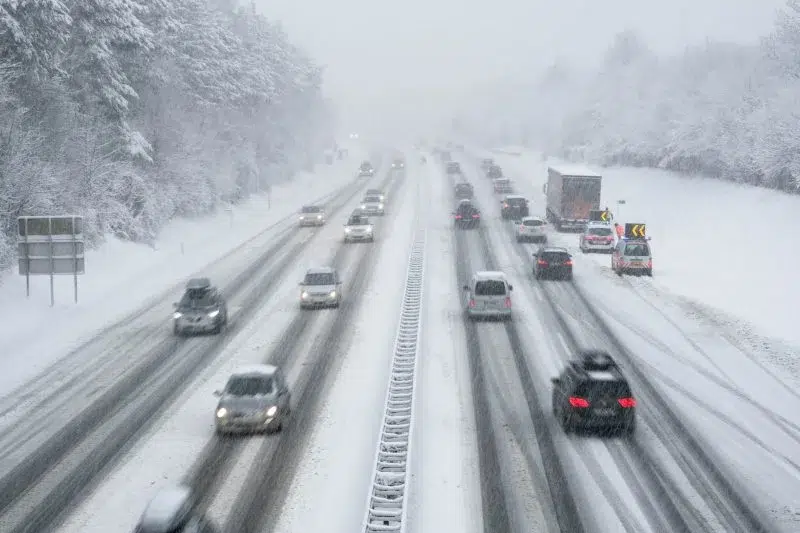
Assemble an Emergency Kit
A tow truck may take longer to reach you in a severe storm. Be prepared to wait safely.
- Essentials: Include a brightly coloured blanket, non-perishable food (energy bars), water bottles, a fully charged cell phone, a first-aid kit, a flashlight with extra batteries, and jumper cables.
- Winter Specific: Add road salt, sand, or kitty litter for traction, a small shovel, and high-visibility roadside flares or reflective triangles.
- Learn More >>>>>Fast Response for Breakdowns & Accidents
II. Safety Tips for Driving in the Rain: Mastering the Wet Road
Rain, especially the first rain after a dry spell, creates a hazardous combination of oil residue, dust, and water, resulting in an extremely slick surface. The primary risk in heavy rain is hydroplaning.
Controlling Speed and Distance
- Reduce Your Speed: This is the most important of all safety tips for driving in the rain. Posted speed limits are for ideal, dry conditions. Reduce your speed by at least one-third in heavy rain. Lower speeds give your tires a better chance to push water away and maintain contact with the pavement.
- Increase Following Distance: Double your following distance. On dry pavement, the minimum is a two-second gap; in the rain, increase this to four or five seconds. This extra space accounts for reduced visibility and the significantly increased braking distance on wet roads.
- Avoid Cruise Control: Never use cruise control on wet roads. If you hit a patch of standing water and hydroplane, the cruise control system will detect a loss of speed and attempt to accelerate, which can cause your car to spin out of control when the tires regain traction. You need to be in direct control of the acceleration.
The Threat of Hydroplaning
Hydroplaning occurs when a layer of water builds up between your tires and the road surface, causing you to lose traction. Your steering wheel will feel light, and your vehicle will lose responsiveness.
- If You Hydroplane: Do not panic. Do not slam on the brakes. Gently ease your foot off the accelerator and steer lightly in the direction the front of your car is headed. Do not make any sudden turns or movements. Allow the vehicle to slow down naturally until your tires reconnect with the road surface.
- Puddles and Standing Water: Avoid driving through large puddles or areas of standing water. If you must, reduce your speed dramatically. Deep water can stall your engine or make your brakes temporarily ineffective. If your brakes get wet, tap them gently a few times after clearing the water to dry them out.
Steering and Braking Techniques
- Smooth Inputs: Whether you are accelerating, steering, or braking, every input must be gentle and gradual. Sudden actions—a sharp turn or hard brake—are the fastest way to lose traction on a slippery road.
- Look Ahead: Focus your vision farther down the road than usual. This gives you more time to anticipate stops, corners, and lane changes, allowing you to use gentle, preventative braking instead of a sudden, emergency stop.
- Drive in the Tracks: Drive in the tracks of the vehicle ahead of you. Their tires will have already displaced a portion of the water, creating a slightly drier surface for your vehicle to follow.
- Learn More >>>>>What is Winching service?
III. Driving in the Snow and Ice: Navigating the Winter Grip
Snow, slush, and particularly black ice demand a highly defensive and conservative driving style. The difference between driving in rain and driving in snow is that snow and ice offer far less predictable traction.
Winter Driving Techniques
- Gentle Acceleration and Deceleration: When starting from a stop in snow, use minimal pressure on the accelerator. If your wheels spin, ease off and try again, or if your vehicle has a lower gear option, try starting in second gear to reduce torque and prevent wheel spin.
- Braking on Ice: On snowy or icy roads, braking distance can increase tenfold. Start braking much earlier than you would on dry pavement.
- If you have Anti-lock Braking System (ABS): Apply firm, steady pressure to the brake pedal. Do not pump the brakes. The ABS system is designed to do this much faster than you can.
- If you do not have ABS: Pump the brakes gently and quickly to avoid locking the wheels.
- Handling a Skid on Snow: If your vehicle begins to skid (the rear tires are sliding to one side), steer into the skid. This means if the rear of your car is sliding right, gently turn the steering wheel to the right. This technique helps straighten the vehicle and is the most effective way to regain control. Look where you want the car to go, not where it is headed.
- Watch for Black Ice: Black ice is a thin, nearly invisible coating of ice on the pavement that looks like a wet spot. It is most common on bridges, overpasses, and shaded areas because they freeze before the rest of the road. If you suspect you have hit black ice, remain calm, remove your foot from the gas, and keep your steering wheel straight until you pass through the patch.
- Learn More >>>>> Roadside assistance service
Awareness and Road Hazards
- Give Snowplows Space: Snowplows travel slower, stop frequently, and often create large plumes of snow that reduce visibility. Never attempt to pass a working snowplow. Give them plenty of room to clear the roads; they are working to make conditions safer for you.
- Stay Home if Possible: The single most effective safety tip for driving in the rain or snow is to avoid driving altogether during severe winter storms or when a flash flood warning is in effect. Check the local weather and road conditions before you leave. If conditions are hazardous, postpone your trip.
- Keep Your Gas Tank Full: Always keep your gas tank at least half-full. This ensures you have enough fuel to run the engine for heat if you become stranded and helps prevent the fuel line from freezing.
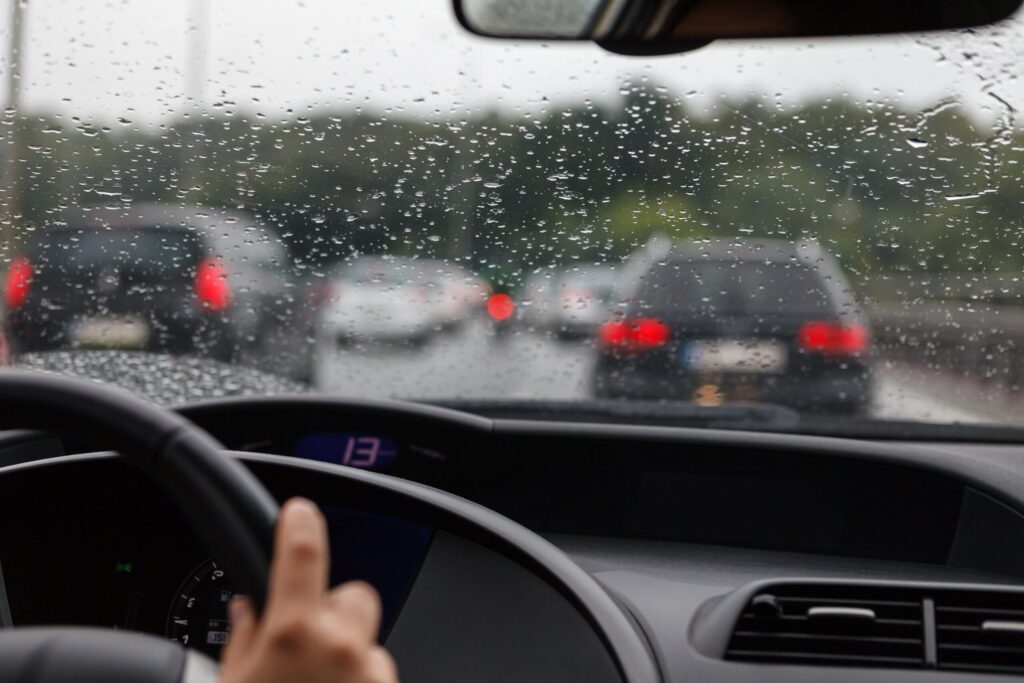
IV. What to Do if You Break Down in Bad Weather
Despite your best efforts and adherence to all the safety tips for driving in the rain and snow, breakdowns happen. Knowing the proper procedure is crucial for your safety while waiting for help.
- Pull Over Safely: Get your vehicle off the road and onto the shoulder as far as possible. If you are on a highway, try to stop past a curve or crest of a hill so other drivers have maximum time to see you.
- Increase Visibility: Immediately turn on your hazard lights. If it is dark or visibility is poor, keep your low-beam headlights on. Place reflective triangles or flares behind your vehicle to warn oncoming traffic. In a blizzard, raise your hood or tie a bright piece of cloth to your antenna or door to signal distress.
- Stay Inside the Vehicle: Unless you are absolutely sure it is safe to exit and you have emergency supplies to set up, stay inside your car. It offers the best protection from the weather and passing traffic.
- Call a Trusted Local Service: Once safely pulled over, call a professional, licensed, and reliable company like Pars Towing. Operating throughout the Aurora and Greater Ontario area, we have the specialized equipment and trained operators to reach you safely, regardless of the weather. Provide your exact location (use a GPS app for coordinates), the make and model of your vehicle, and a description of the road conditions.
- Learn More >>>>>How to handle a car accident
V. Pars Towing: Your Partner for All-Weather Safety
At Pars Towing, we are more than just a tow truck service operating in the Aurora area; we are a community partner committed to road safety. When the rain turns to sleet or the snow falls heavy, our phones ring constantly. We know that following the best safety tips for driving in the rain and snow is your primary defense against accidents and breakdowns.
We encourage every driver in Ontario to prioritize preparation and adopt a highly cautious driving approach during the wet and cold seasons. By committing to regular vehicle maintenance, investing in good winter tires, and practicing defensive driving techniques, you can drastically reduce your risk on the road. However, if the worst does happen—whether it is a slide-off on an icy road or a mechanical failure in a downpour—know that Pars Towing is on standby, ready to provide prompt, professional, and safe assistance to get you and your vehicle back to safety. Drive safe, and be prepared.

